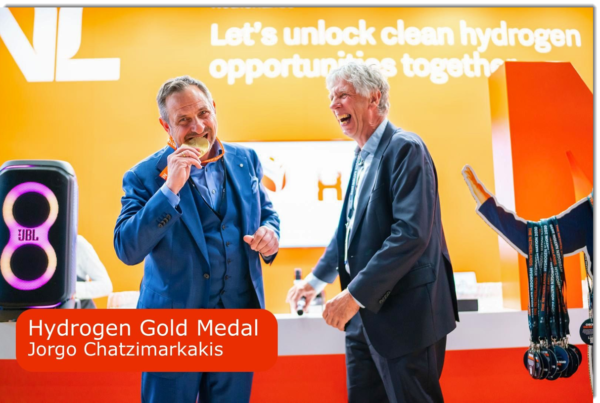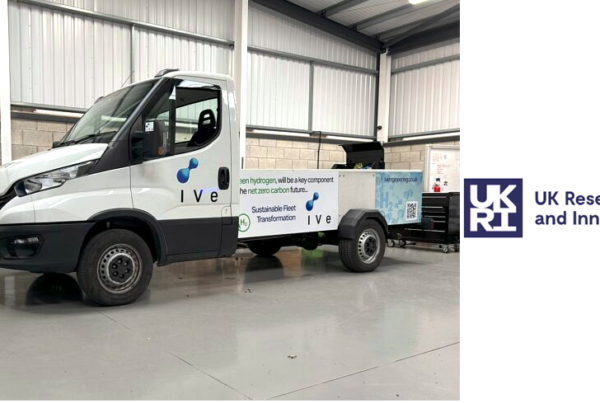
The new German government unveiled plans last week to massively increase the ambition of its national hydrogen strategy. There is just one caveat: fossil gas-based hydrogen likely won’t be included in subsidy schemes, despite demands from the oil and gas industry.
Clean hydrogen is seen as a potential silver bullet to decarbonise industries like steel and chemicals, which cannot fully electrify and need energy-dense fuels to generate high-temperature heat for their industrial processes.
The European Commission says it will play a key role to achieve the EU’s climate goals, saying that 24% of global energy demand in 2050 could be met with clean hydrogen.
“We need a massive ramp-up of hydrogen,” explained Vice-Chancellor Robert Habeck on 11 January in Berlin. The steel industry alone would require five times more hydrogen than currently planned for in all sectors, he added.
To achieve this goal, Germany will double its hydrogen electrolyser capacity from 5GW to 10GW in 2030 as part of its upcoming “easter package” of legislation, Habeck explained.
Habeck wants to speed up production by rapidly implementing the €8 billion worth of hydrogen “Important Projects of Common European Interest” (IPCEI), establishing additional subsidy schemes, and offering companies “Carbon Contracts for Difference” to de-risk their investments.
The legal framework will also be adjusted to maximise the production, transport and use of so-called green hydrogen, which is made by splitting water molecules into oxygen and hydrogen using renewable electricity.
“We are also committed to this at the European level,” according to Habeck’s climate protection opening balance, which singles out the establishment of certification systems as one aspect of EU legislation where Berlin will now favour green hydrogen.
The promise of blue hydrogen
However, Germany will make no subsidies available for so-called “blue hydrogen”, which is created by using fossil gas and sequestering the resulting CO2 emission using carbon and capture (CCS) technology, said Patrick Graichen, Habeck’s state-secretary and right-hand man.
For proponents of blue hydrogen, the German plan makes for tough reading. Oil and gas industry representatives have come out strongly in favour of blue hydrogen and even the European Commission said it will be needed in the transition to a fully renewable-based hydrogen economy.
According to a 2021 report sponsored by the industry, hydrogen production based on natural gas could save Europe €2 trillion by 2050 because it can be based on existing gas infrastructure.
Another argument often put forward by blue hydrogen proponents is that it can help break the chicken-and-egg problem, where a lack of hydrogen production leads to a lack of demand.
“If we want to solve this chicken-and-egg issue, the time to get into the hydrogen economy is now and that would mean accepting different forms of hydrogen,” explained Sigfried Russwurm, president of the German industrial association BDI, on 13 January.
On the way to 100% green hydrogen “we have to face the reality that these quantities of green hydrogen are neither realistic nor available today and in the coming years as the market ramp-up will happen slowly,” he told journalists when asked by EURACTIV.
His position is supported by the influential German economist Veronika Grimm, a member of Germany’s national hydrogen council. “Green hydrogen will not realistically be available in a timely manner,” she told EURACTIV. “Blue hydrogen can build a bridge here.”
The issue with blue hydrogen
But despite all its supporters, blue hydrogen struggles to shake off its dirty secret: the fact that fossil gas is a key material in its creation, with all the issues it entails.
Gas, imported primarily from problematic states like Russia, tends to leak from pipelines which has severe climate impacts, as methane is a potent greenhouse gas.
“We are yet to visit a country that does not have an alarming amount of methane pollution leaking or venting from oil and gas facilities,” said Jonathan Banks from the Clean Air Task Force, an environmental NGO.
The latest blow came with the European energy crisis which saw gas prices rise to record highs after the summer. As blue hydrogen relies on gas, the sharp price increase has demonstrated that blue hydrogen is exposed to market volatility as a consequence.
“I think for an investor, blue hydrogen will look very risky,” explained Tom Baxter, co-founder of the Hydrogen Science Coalition, a think-tank.
When adding doubts surrounding CCS technology, many analysts and researchers are sceptical of blue hydrogen’s price credentials.
“We find that emissions from gas or coal based hydrogen production systems could be substantial even with CCS, and the cost of CCS is higher than often assumed,” writes a January study published in Applied Energy.
Lastly, there are concerns that supporting blue hydrogen will create a lock-in effect into fossil fuel infrastructure. “Once you’ve invested in blue hydrogen, you are invested for 30 years,” said Baxter. As a consequence, blue hydrogen “is not a stepping stone.”
“You’re not going to shut down blue hydrogen when green hydrogen comes along.”
Read the most up to date Fuel Cell and Hydrogen Industry news at FuelCellsWorks




